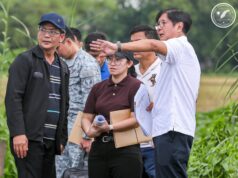In an interview with Punto herè, Dr. Arlene Vytiaco, head of the animal disease and control division of the Bureau of Animal Industry (BAI) said that earlier findings of the Research Institute for Tropical Medicine that the bird fl u was not of the H5Ni strain, only the results from Australia could definitely confirm this.
This, Vytiaco said, is the reason why those being hired to gather poultry and other fowls in the quarantine zone have been required to wear masks and special vests.
“We have also assigned only one person from the municipal government to oversee the culling of fowls in the quarantine zone so that only he could be quarantined for 10 days,” she said.
Vytiaco also said eight caretakers of affected poultries in San Luis have been trained on what to do to protect themselves from avian flu.
The US Center for Disease Control (CDC) said in its website, however, that while cases of avian flu infection in humans have been reported, such cases are rare.
It also said that while H1N1 avian flu strain is difficult to transmit between persons, mortality rate in infected humans is about 60 percent.
This, even as Vytiaco appealed for the understanding of poultry raisers outside the one-kilometer radius quarantine zone where the culling and burial of some 200,000 birds started Saturday night.
Poultry raisers were called to a meeting yesterday morning by this town’s Mayor Johnny Sambo to discuss the effects of the avian flu case on this town where poultry raisers have an estimate of about one million layers.
The poultry owners complained that their egg produce are either being rejected by former customers or are being blocked on their delivery routes by officials of local government units in other provinces from far north in Ilocos to Bulacan in southern Central Luzon.
Sambo noted that his town is beyond the seven- kilometer radius from the avian flu zone in San Luis.
The Department of Agriculture (DA) earlier barred the transport of live and frozen poultry into or from areas within this radius. It also barred all poultry in Luzon from reaching Visayas and Mindanao.
Vytiaco said, however, that the policy being adopted by the DA is according to the Philippine Avian Influenza Protection Program which was developed during the height of the outbreak of the Highly Pathogenic Avian Influenza (HPAI) in Southeast Asia in 2005.
This, as she appealed for understanding of poultry raisers within the seven-kilometer radius.
“Just think that because of necessity, even poultry raisers in Southern Tagalog, which is much far away from Pampanga, cannot market their chicken to the Visayas,” she noted.



